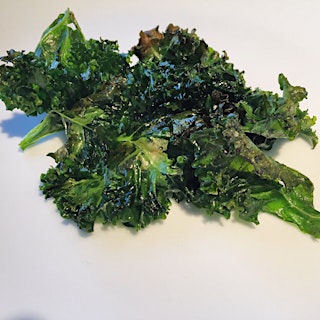Eat More Servings of Fruits & Veggies Per Day
What’s Inside
What’s In & What’s Out
- A serving of fruit is 1 medium piece, or ½ cup. A serving of vegetables is 1 cup fresh, or ½ cup frozen or canned.
- Preserving produce at its freshest is a great way to preserve its nutrients, so frozen and canned produce are a-okay if fresh isn’t an option.
- Fruit juice is disqualified because it lacks fiber. Fiber is found in whole fruit, and helps your body metabolize the fruit’s natural sugars more slowly. It also helps keep you full, is important for digestion, and can help lower cholesterol. While fruit juice (in small quantities) is better than soda, it’s basically liquid sugar. Remember, love thy fiber!
- Dried fruits count. Look for the kind without sulfites or added sugar. Dried fruit is delicious but has more concentrated sugar than fresh fruit, so choose dried figs, pears, peaches and currants, as they have the most fiber.
- No, tomato sauce on your pizza does not count as a serving of fruits or veggies. Nor does ketchup.
- Nice try, but we don’t qualify french fries as potatoes once they hit the deep fryer. And in fact, try to choose sweet potatoes over regular white potatoes because they are much more nutritious.
- Jam, jelly, preserves and marmalade don’t count either. They contain a lot of sugar, and your body thinks it has just eaten a pixie stick.
Why This Is A Good Idea
The Federal Dietary Guidelines recommend 1.5 - 2 cups of fruit and 2-3 cups of vegetables daily (about 5 servings)—giving you the vital vitamins, nutrients and fiber your body needs to thrive. A diet high in fruits and vegetables can help prevent type 2 diabetes, lower blood pressure, help you maintain a healthy weight, and even make your skin glow!
Over 70% of strokes and colon cancer can be avoided, as can at least 80% of heart disease and 90% of type 2 diabetes, and diet is a significant factor. Along with exercise and not smoking, developing good eating habits (less animal products, less processed food and more veggies and fruit) can help cut your risk of diabetes by 95%, your risk of heart attack by 80% and risk of a stroke by half.
Basic Tips
- Be sure to check in every time you eat some fruits or vegetables. Select the number of servings you had at that meal. You can check in multiple times in a day. Try not to wait till the end of the day - it’s much more effective to check in right after you eat.
- Use snack time to your advantage to help you reach your daily goal—replace crackers or cookies with carrots and hummus, berries, or an apple with nut butter.
- Check one off the list before you even get to work by including a fruit and/or veggie in your breakfast. Green smoothie, anyone? Yogurt with fruit? Omelette with spinach, perhaps?
- Aim to have at least one veggie on your plate at lunch and dinner, and the more the merrier. The dietary guidelines state to have half your plate covered with veggies.
- Keep easy-to-eat fruit in your bag in case you get the emergency munchies. Bananas, apples, grapes, and berries are all convenient and easy to eat.
- Raw veggies are also a great on-the-go snack—cut up cauliflower, broccoli, bell peppers, and/or carrots, and put them into a container to take on the road.
- Eat fruit for dessert! Either on its own, with yogurt, or on ice cream if you’re having an indulgent treat.
- Eat the rainbow—a variety of colors of produce in your diet guarantees you’ll be getting a wide range of nutrients.
- The darker and more vibrant the vegetable, the better (except cauliflower, the pale powerhouse).
Shopping List
- Farmers markets, farm stands, your garden, and the produce section at the grocery store are your new best friends. The more locally grown the better, as the produce will be fresher and have less of an environmental impact if it comes from nearby.
- The frozen section is good too—being able to keep produce on hand is the best way to ensure you eat it!
- Berries are the queen of the fruit category, containing less sugar and more antioxidants and fiber than others.
- Be sure to stock up on leafy greens like kale, swiss chard, spinach, and broccoli—these guys are the kings of nutrition, and they are easy to cook. If you don’t have time to chop during the week you can chop all at once over the weekend and store your produce in a vented or perforated bag in your fridge. Or buy pre-chopped in a pinch, and let the grocery store do the heavy lifting for you.
- Keep veggies that can be eaten raw as a snack, dipped in something, or cooked for dinner on hand—like zucchini, cauliflower, green beans, bell peppers and carrots. Their versatility increases the likelihood that you’ll eat them!
Recipes
Grilled Nectarine Salad by annefood 
Roasted butternut squash skewers by Newgent 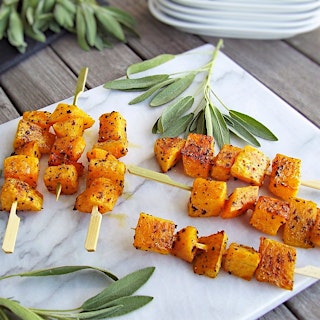
Simple Green Beans with Shallots by annefood 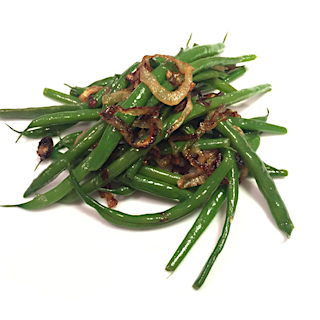
Glazed Cauliflower “Wings” by Rachna 
Quick-fried Broccolini and Oyster Mushrooms by gingerandchorizo 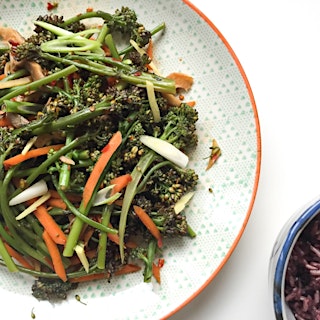
Carrot Ginger Soupt by chefshauna 
Rainbow Vegetable Tian by SarahPhillips 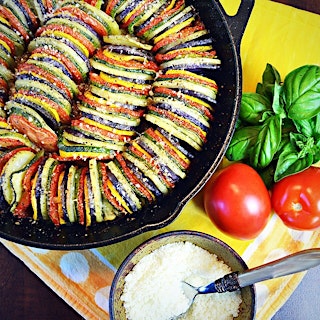
One-pan Fig and Vegetable Roast Chicken by annefood 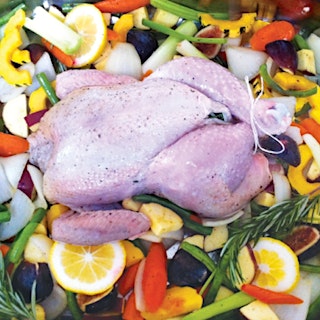
Summer Berry Tart by JenniferEmilson 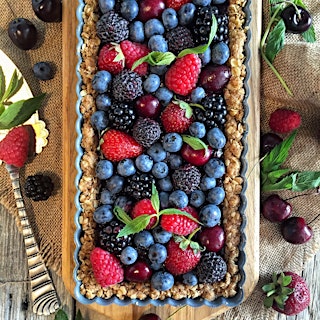
Smart Things To Read And Watch
- The Last Conversation You’ll Ever Need to Have About Eating Right
- Harvard School of Public Health’s Guide to eating Fruits and Vegetables
- VIDEO: How to add veggies to your diet
- A study on fruit and vegetable intake and the risk of cardiovascular disease
- Eating fruits and veggies makes you happy
- Why fiber is so important for your health
- Fruit snacks are not fruit. They are candy.
- Daily fresh fruit can lower heart death risk just as much as statins
- A naturally picky eater? There’s no such thing.
- Vegetable-based desserts
- Cutting sugar from kids’ diets improves health in just days
- A Calorie is Not a Calorie
- Eliminate Most of Your Chronic Disease Risk in Four Steps
Note: Diet ID is not focused on the number on the scale. Weight loss can be a byproduct of developing healthier eating habits, but if you have questions about your weight, please contact your physician.
